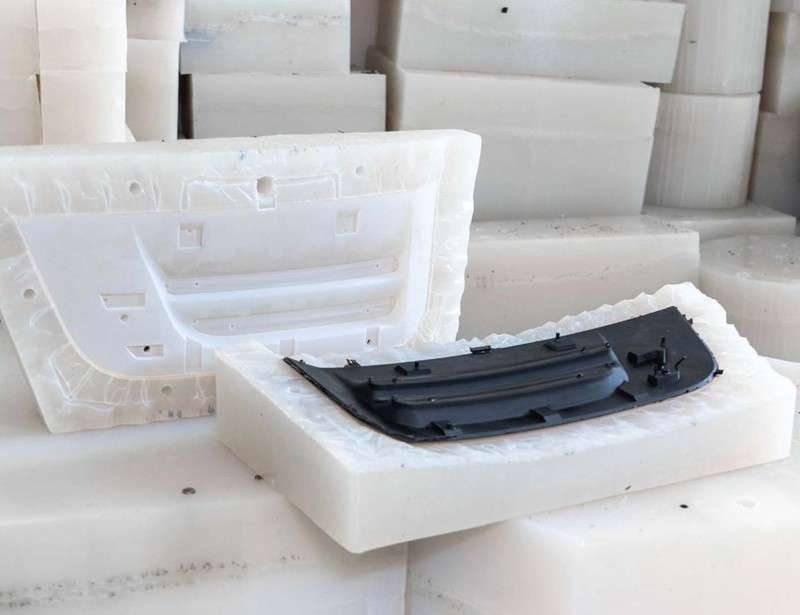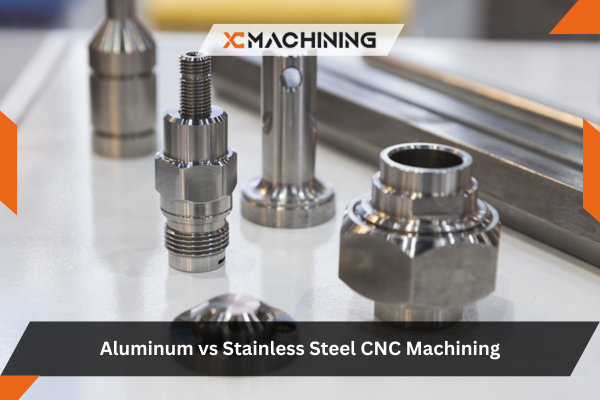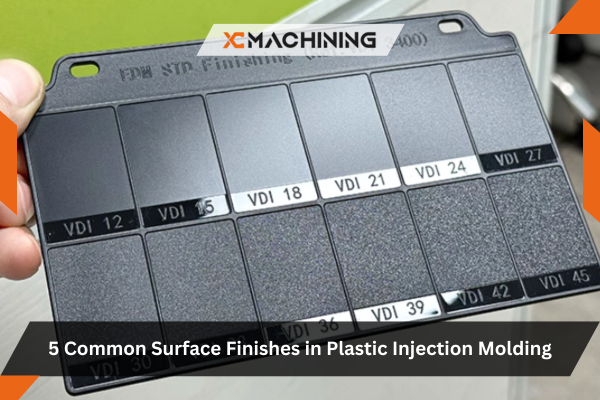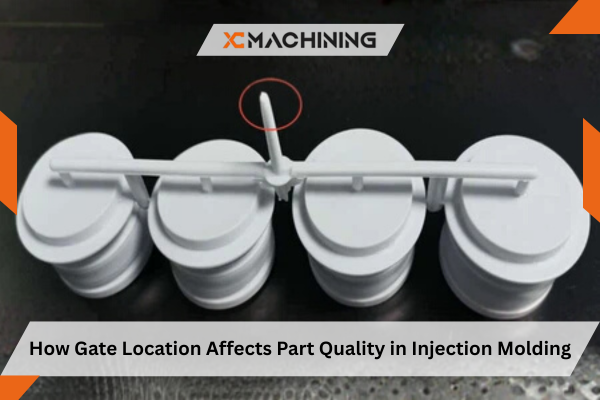PA12 (Polyamide 12) offers good natural surface quality after machining, but several finishing options can further enhance appearance, performance, and durability. XC Machining selects surface finishes based on part geometry, cosmetic requirements, and application environment.
As Machined Finish
This is the most common finish for PA12 CNC components. PA12 machines cleanly and leaves a smooth surface with only minor tool marks. The natural finish ranges between Ra 1.2–3.2 µm, depending on feed rates, tool sharpness, and machining strategy. This finish is ideal for internal components, housings, brackets, and functional parts that do not require cosmetic enhancements.
Light Bead Blasting (Selective Use)
Bead blasting can be applied to rigid or reinforced PA12 grades (such as PA12 GF30), giving a soft matte texture that reduces shine and blends machining marks. XC Machining uses controlled low-pressure blasting to avoid surface deformation or material removal. This finish is not recommended for thin-walled or very soft PA12 parts.
Vapor Polishing (For Optical or Smooth Surfaces)
Vapor polishing works better on certain plastics like PC and PMMA, but it can also be applied to PA12 under specific conditions to enhance smoothness. It improves surface clarity and reduces roughness. XC Machining only recommends this process when extremely smooth or semi-gloss surfaces are required.
Painting, Dyeing & Custom Coloring
PA12 parts can be painted or dyed to match custom colors, especially for consumer products, protective housings, and enclosures. Dyeing is more common for SLS-printed PA12, but CNC-machined PA12 can also be surface-prepared for strong paint adhesion. XC Machining offers paint-ready finishing upon request.
Polishing & Manual Finishing
For cosmetic parts or components that require low friction, XC Machining offers manual polishing and fine sanding techniques to smooth edges and remove tool marks. This is especially helpful for sliding components, gears, and consumer product housings.
What Are the Challenges When Machining PA12?
Although PA12 is easier to machine than many polymers, it presents several challenges due to its softness, low melting point, and flexibility. XC Machining overcomes these difficulties using specialized tooling strategies and a controlled machining environment.
Soft Material Leads to Tool Push-Off & Deflection
PA12 is softer than most engineering plastics, which means cutting tools can push the material instead of removing it cleanly. This often results in dimensional inaccuracies, rounded edges, and inconsistent wall thickness across the part. To counter this, XC Machining uses razor-sharp cutters, optimized feeds, and rigid fixturing systems that stabilize the material and maintain high-precision machining throughout the process.
Heat Buildup May Cause Melting or Gumming
PA12 has a relatively low melting temperature compared to other polyamides. When heat accumulates during machining, the plastic can melt, smear, or cling to the cutting tool, leading to surface defects and reduced machining accuracy. XC Machining prevents heat buildup by operating at high spindle speeds with low feed rates, utilizing coolant misting or directed forced air, and ensuring efficient chip evacuation. These strategies maintain a cool cutting environment and produce clean, sharp edges.
Burr Formation on Edges & Small Features
Soft plastics like PA12 tend to create small burrs during machining, particularly around drilled holes, pockets, and intricate features. These burrs can affect part quality and assembly performance. XC Machining minimizes burr formation through refined toolpaths, high-rpm finishing passes, and thorough deburring techniques, both automated and manual, ensuring every part has clean and precise edges.
Maintaining Tolerances on Thin-Wall Components
Thin-walled PA12 parts are prone to flexing, vibration, or chatter under machining forces, which can compromise dimensional accuracy and surface finish. To maintain exceptional tolerances, XC Machining employs vacuum fixtures, custom clamping solutions, and reduced cutting forces. These methods stabilize delicate geometries and prevent movement during milling or turning operations.
Dimensional Stability & Post-Process Shrinkage
Although PA12 absorbs far less moisture than PA6 or PA66, slight dimensional changes can still occur due to humidity or material relaxation after machining. This can lead to shrinkage or minor deformation if not controlled. XC Machining stores PA12 stock material in a climate-controlled environment and allows machined components to rest before final finishing or inspection. This controlled workflow ensures long-term dimensional stability and reliable performance in critical applications.














